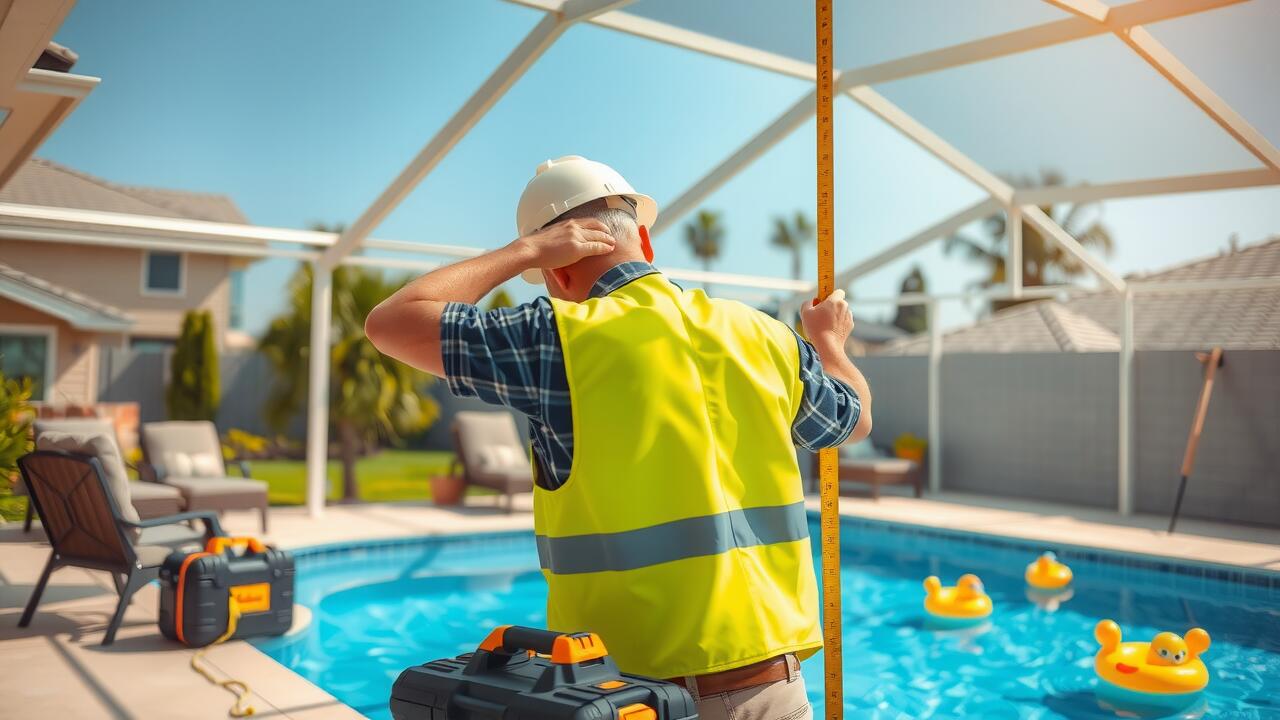
Manufacturer Warranties
Manufacturer warranties play a crucial role in determining the lifespan of pool enclosures. These warranties often outline the expected durability of the materials used, along with the conditions under which they remain valid. Typically, warranties span anywhere from a few years to several decades, depending on the manufacturer and the specific product line. It’s important to carefully review the terms, as they can include various clauses related to maintenance, installation, and environmental factors that may affect the enclosure’s longevity.
In addition to the duration, certain aspects are covered under these warranties. Most commonly, they include defects in materials and workmanship. Some warranties might extend to specific components like screens, frames, and hardware. Understanding what exactly is covered can help homeowners make informed decisions about maintenance and repairs. Knowing the details of the warranty can also provide peace of mind, ensuring that if issues arise, there is a clear path for resolution.
What Warranties Cover
Manufacturer warranties for pool enclosures typically cover various aspects of the product, focusing on structural integrity and workmanship. Gaps in coverage may exist, particularly regarding wear and tear caused by environmental factors such as extreme weather conditions. It’s essential for homeowners to read through the warranty documents carefully to understand what is included and any limitations or exclusions that may apply to their specific situation.
In many cases, warranties will also cover defects in the materials used. This includes issues with screens, frames, and hardware that may arise within the warranty period. Some manufacturers may offer extended warranties or additional coverage options for pool enclosures, allowing homeowners peace of mind regarding potential repairs and maintenance. Knowing what is covered can help in making informed decisions about care and any necessary repairs over time.
Common Signs of Wear
Pool enclosures can show various signs of wear over time, reflecting their exposure to weather conditions and regular use. One of the most noticeable indicators is physical damage to the screens or panels, which may develop tears, holes, or discoloration. Rust or corrosion may appear on metal components, particularly if the enclosure is near saltwater or in a humid environment. Checking the frame for any warping or bending is also essential, as these changes can compromise the structural integrity of the enclosure.
Another common sign is difficulty in operation. If sliding doors or panels become stiff or difficult to open, it may indicate that hinges or tracks are wearing out. Additionally, a buildup of debris or dirt that cannot be easily cleaned may signal that the enclosure is no longer functioning as intended. Regularly examining these aspects can help maintain the efficiency and appearance of pool enclosures, prolonging their lifespan.
Identifying Damage Early
Regular inspections of pool enclosures are essential to maintain their integrity and functionality. Look for signs of wear and tear, such as cracks, rust, or sagging. These issues can compromise the overall structure, leading to more significant problems down the line. Checking the seals and connections can also help in identifying potential water or air leaks that may weaken the enclosure further.
Timely detection of damage allows for prompt repairs, preventing minor concerns from escalating into costly fixes. Pay special attention to areas that experience frequent exposure to sunlight or harsh weather, as these conditions can accelerate deterioration. Maintaining vigilance will ensure that pool enclosures remain a safe and protective barrier for your swimming space, extending their lifespan significantly.
Upgrading Your Enclosure
Upgrading your pool enclosure can enhance not only the aesthetics of your outdoor space but also improve functionality and safety. New designs and materials in pool enclosures offer better durability and protection from the elements. Opting for modern features, such as improved ventilation or automated opening systems, can also increase convenience and enjoyment of your pool area.
When considering an upgrade, assess the current condition of your pool enclosure and take note of any limitations it has. Advancements in technology may present opportunities for energy efficiency or reduced maintenance needs. Evaluating how your lifestyle has changed since the installation can help guide your decision to invest in a more suitable pool enclosure.
When Is It Time for a Replacement?
Determining when to replace pool enclosures can depend on several factors. Significant wear and tear often indicates that an upgrade is necessary. Fading colors, cracks, or rust spots may compromise the integrity of the structure. Regular inspections can reveal these issues early, allowing homeowners to assess whether repairs could extend the lifespan of the enclosure.
Additionally, changes in local regulations or safety standards might prompt a replacement. Many homeowners upgrade to newer models for improved aesthetics or enhanced functionality. Keeping an eye on advancements in materials and technology can also influence the decision to invest in a new pool enclosure. Upgrading can provide better durability and enhanced safety features for a more enjoyable swimming experience.
FAQS
How long can I expect my pool enclosure to last?
The lifespan of a pool enclosure typically ranges from 10 to 20 years, depending on factors such as the materials used, maintenance, and environmental conditions.
What factors can affect the longevity of my pool enclosure?
Factors that can affect the longevity include the quality of materials, frequency of maintenance, exposure to harsh weather conditions, and the installation process.
Are there warranties available for pool enclosures?
Yes, many manufacturers offer warranties that can cover specific components of the enclosure, such as materials and workmanship, usually ranging from a few years to a lifetime for certain parts.
How can I identify signs of wear in my pool enclosure?
Common signs of wear include rust, bent or broken frames, tears or holes in the screening, and difficulty in opening or closing doors or panels.
What should I consider when deciding to upgrade my pool enclosure?
Consider factors such as the current condition of your enclosure, any recent damage, changes in your needs or preferences, and advancements in enclosure technology or materials that may offer better protection or aesthetics.
